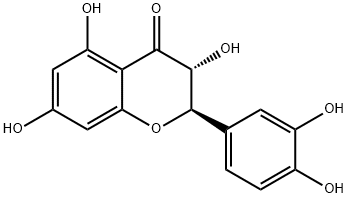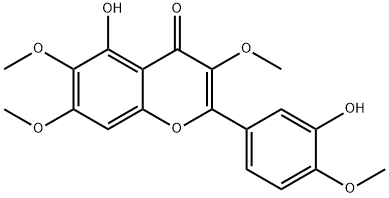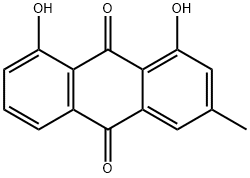A8284812
Taxifolin , ≥98% , 480-18-2
Synonym(s):
(2R,3R)-3,3′,4′,5,7-Pentahydroxyflavanone;(2R,3R)-Dihydroquercetin
CAS NO.:480-18-2
Empirical Formula: C15H12O7
Molecular Weight: 304.25
MDL number: MFCD00006845
EINECS: 207-543-4
| Pack Size | Price | Stock | Quantity |
| 100MG | RMB120.00 | In Stock |
|
| 1G | RMB606.40 | In Stock |
|
| 5g | RMB1596.00 | In Stock |
|
| others | Enquire |
Update time: 2022-07-08
PRODUCT Properties
| Melting point: | 230-233°C (dec.) |
| Boiling point: | 365.09°C (rough estimate) |
| Density | 1.3326 (rough estimate) |
| refractive index | 1.4790 (estimate) |
| storage temp. | -20°C |
| solubility | DMSO (Slightly), Methanol (Slightly) |
| pka | 7.39±0.60(Predicted) |
| form | Solid |
| color | White to Yellow |
| BRN | 5299277 |
| InChI | InChI=1S/C15H12O7/c16-7-4-10(19)12-11(5-7)22-15(14(21)13(12)20)6-1-2-8(17)9(18)3-6/h1-5,14-19,21H/t14-,15+/m0/s1 |
| InChIKey | CXQWRCVTCMQVQX-LSDHHAIUSA-N |
| SMILES | [C@H]1(C2=CC=C(O)C(O)=C2)OC2=CC(O)=CC(O)=C2C(=O)[C@@H]1O |
| LogP | 0.950 |
| CAS DataBase Reference | 480-18-2(CAS DataBase Reference) |
| EPA Substance Registry System | 4H-1-Benzopyran-4-one, 2-(3,4-dihydroxyphenyl)-2,3-dihydro-3,5,7-trihydroxy-, (2R,3R)- (480-18-2) |
Description and Uses
Taxifolin, a chemical substance extracted from pine plants such as larch and Douglas fir. It belongs to the bioflavonoid pseudo-vitamin P, and its scientific name is dihydroquercetin. Japanese scholar Fukui first isolated it from the leaves of conifers (Chamaecyparis obtusa), and its biological activity was subsequently discovered and confirmed.
An antioxidant flavenoid.
Safety
| Symbol(GHS) |  GHS07 |
| Signal word | Warning |
| Hazard statements | H315-H319 |
| Precautionary statements | P264-P280-P302+P352-P337+P313-P305+P351+P338-P362+P364-P332+P313 |
| Risk Statements | 22 |
| Safety Statements | 22-24/25 |
| WGK Germany | 3 |
| RTECS | LK6920000 |
| HazardClass | IRRITANT |
| HS Code | 29329990 |




